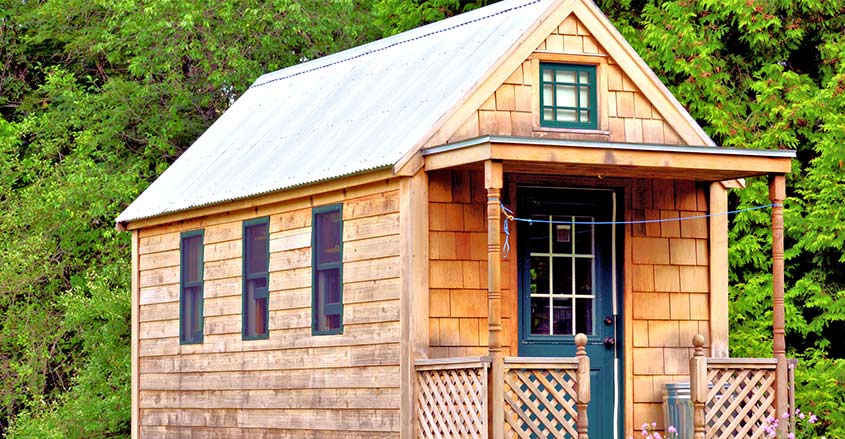Prefabricated, modular houses and so-called “tiny houses” are big business at the moment. A modular house is like a traditional home but made in a factory. The same goes with tiny houses, which are miniaturized versions of a full-sized home.
Kit homes have a long history, dating back to the days of Sears mail-order home.
The prefabricated house industry boosted annual revenues by 8.6% from 2013 to 2018. That amounts to revenue growth of about $10.5 billion. About 4.1% of that revenue growth occurred in 2018.
Tiny houses don’t require foundations, are relatively cheap to buy, and can be constructed in a manner relative to connecting Lego bricks. E-commerce giant Amazon is now getting in the business of selling prefab and tiny houses.
Housing with free shipping
In May 2019, Allwood Solvalla, a manufacturer of small, DIY tiny houses, temporarily sold out of its $7,250 Norwegian wood cabin after listing it for sale on Amazon.
News of the sales went viral, emphasizing the popularity of tiny homes.
The Allwood Solvalla tiny house offers 172 square feet of space, can comfortably house two people, and can be constructed by anyone in 8 hours. That such a product can sell out on Amazon, even temporarily, is evidence that the prefab housing market is rising, however incrementally.
As a result, Amazon is now all-in on selling prefab and tiny houses. You can now buy such dwellings on Amazon for a few thousand or tens of thousands of dollars. Free shipping is an added incentive.
There is a 292-square-foot tiny house for sale called the Lillevilla Allwood Getaway Cabin, which costs $19,000. Amazon describes the home as being ideal for use as a home office, summer house, or retail space.
However, as the saying goes, a house is not always a home. There are hidden fees that can cost consumers more as they try to save on tiny houses.
Devil in the details
The tiny houses sold on Amazon do not come with utility hookups, bathrooms, kitchens, foundations, and are usually not suited for more than two people.
Consumers can’t install tiny homes on most residential land without paying for a permanent foundation. Building permits, fees, and hooking up utilities like plumbing and electricity can cost $10,000 or more over the purchase price.
Ultimately, whatever price you see online, go ahead and double it to get closer to the real cost. Then consider who long you can handle living in a space smaller than a big-city studio apartment.


